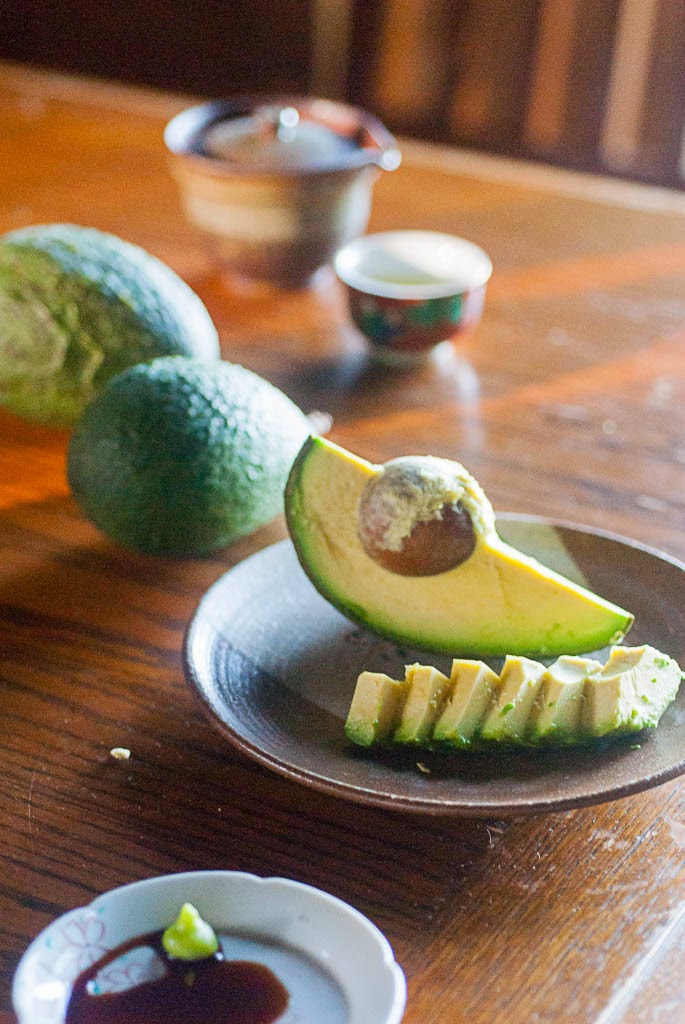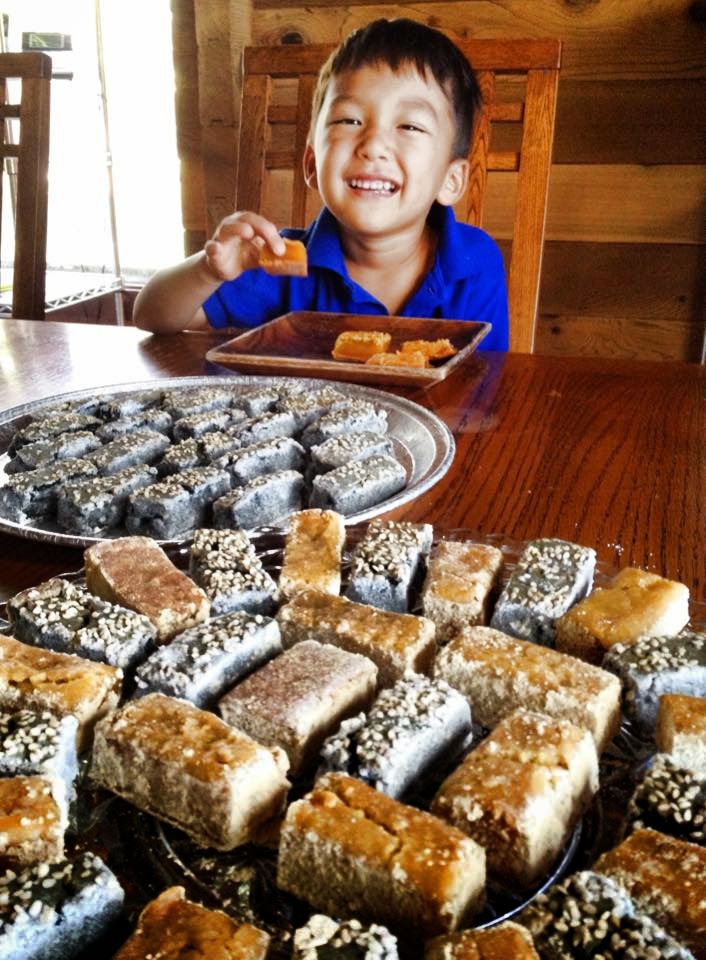My favorite green tea and avocado combo is premium green tea infused sake and avocado sashimi. Avocado is rich and creamy, and texture reminds me of toro, or fatty tuna and uni, or sea urchin. Mauna Kea Premium green tea is cold infused at room temperature for 5 hours in Kikusui junmai ginjo sake. 1 tablespoon (0.25oz) of green tea to 1/2 cup of this sake is a bit more than what I would use for brewing in hot water. I first got the idea of infusing green tea in alcohol from chemical analysis done at University of Hawaii, Hilo (UH Hilo). They extracted and measured EGCg, Theanine and caffeine contents of green tea with boiling water, but what struck me was that their baseline concentrations of EGCg, Theanine and caffeine were extracted with methanol for 1/2 hour. MK premium Green extraction Theanine % Caffeine % EGCg % Boiling water 0.45% 0.35% 0.83% Methanol 0.11% 0.28% 1.73% High level of EGCg makes alcohol extraction bitter? Methanol extraction showed...


